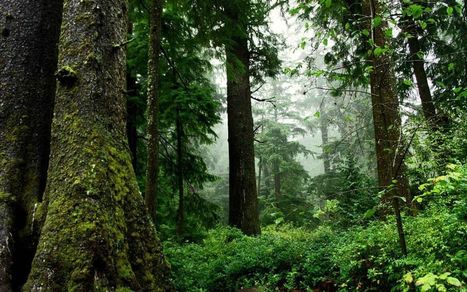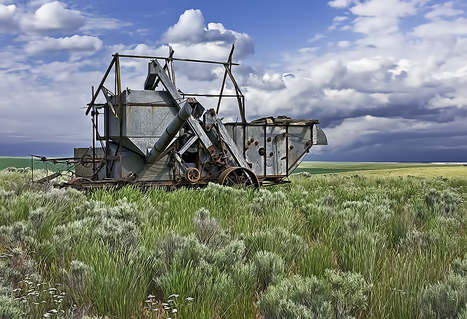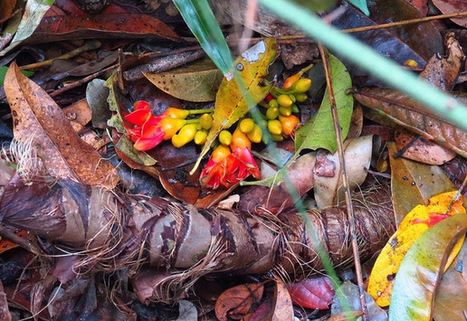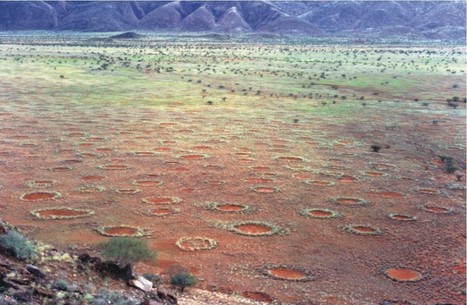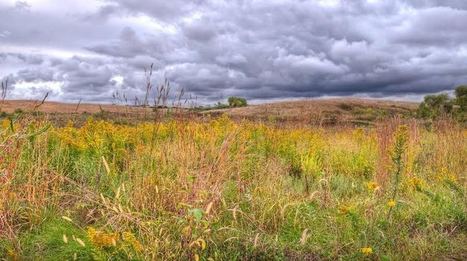 Your new post is loading...
 Your new post is loading...
"Have you ever walked through an evergreen forest in the rain? There is a hush all around. The forest floor is spongy and soft beneath your feet, and the layers and textures all around you create a coziness, a feeling of being protected. As you take a deep breath of fresh, clean air, you know it’s raining big drops up above, but all you feel is a cool mist floating down through the canopy.
You can find expansive sections of this forest all around Puget Sound. For many people, it is a mental and spiritual health reservoir, a place that helps us reconnect and remember that we are nature. But it is also an ecosystem services powerhouse. It stores carbon, cleans the air and water, regulates temperatures, and provides shelter and food for critters big and small."
"The mindset behind geoengineering stands in sharp contrast to an emerging ecological, systems approach taking shape in the form of regenerative agriculture. More than a mere alternative strategy, regenerative agriculture represents a fundamental shift in our culture’s relationship to nature. Regenerative agriculture comprises an array of techniques that rebuild soil and, in the process, sequester carbon. Typically, it uses cover crops and perennials so that bare soil is never exposed, and grazes animals in ways that mimic animals in nature. It also offers ecological benefits far beyond carbon storage: it stops soil erosion, remineralises soil, protects the purity of groundwater and reduces damaging pesticide and fertiliser runoff." Photo details: Abandoned Bailer Johnson Road. Copyright © 2009, Alan D. Wilson. http://www.naturespicsonline.com
"Look to the abundance of lessons nature has to offer and develop a biomimetic design that solves an important food system challenge while protecting the health of our planet."
"With the relevance of the word "prevention" long ago lost, the two salient words in climate change action are now "mitigation" and "adaptation." The ideal, of course, is to design adaptations to the changing atmosphere that also mitigate the effects or lessen the causes. It does not make sense, after all, to cool your building while warming the planet. This is where nature might have some suggestions." Photo details: Icefields Parkway Near Crowfoot Glacier , Banff National Park, Alberta. Copyright © 2011, Alan D. Wilson. http://www.naturespicsonline.com
"In nature, there are communities of organisms that interact with each other and the nonliving parts of their environment. That’s what an ecosystem is. Living organisms include plants, animals, bacteria, fungi, and more. We humans are part of the ecosystems we live in, but we don’t always contribute as much to the community as we could. Let’s look at ways some businesses have learned to start behaving more like cooperative members of nature. This story is about beer but can be applied to any business because it’s about how emulating an ecosystem can lead to less waste while supporting various industries."
"A new report from the HOK designers and the Biomimicry 3.8 biologists lays out a map for using nature to problem solve. The report lays out a kind of textbook for how apply Biomimicry design principles. This process begins with a nuanced understanding of place by examining one's biome--a region defined by a community of plants and animals that have evolved to survive in a specific climate. The next steps involve identifying how nature problem-solves, and applying these concepts."
The disappearance of a major natural unit of vegetation from the face of the earth is an event worthy of causing pause and consideration by any nation.
"The Namib Desert is dotted with thousands of mysterious “fairy circles,” which are near-perfect circles of barren soil two to fifteen meters wide, rimmed by tall grass. They are unmistakable and stretch for miles, giving the landscape an ethereal and otherworldly feel. Many possible explanations have been proposed, including toxic substances in the soil, meteorites, termites, UFOs, and the ghosts of dead natives. But the circles are extremely remote—more than 110 miles from the nearest village—and have been difficult to study scientifically. Despite decades of research, the cause of these bizarre circles has remained elusive. But now, after a six-year study and more than 40 trips to the Namib Desert, Dr. Norbert Juergens believes he has come to understand the biological underpinnings of this strange phenomenon. According to Juergens, a single species of termites is responsible for creating and maintaining the circles. But the barren circles aren't just a byproduct of these tiny insects living below the sandy desert surface; they are part of a carefully cultivated landscape that helps the termites—and many other organisms—thrive in an otherwise inhospitable climate."
"BioHaven® floating islands biomimic natural floating islands to create a “concentrated” wetland effect that improves removal of nitrate, ammonia and phosphate several fold."
|
"What if building codes actually required new projects to enhance a certain number of ecosystem services — such as sequestering carbon, building topsoil, enhancing pollination, increasing biodiversity or purifying water and air? Is it possible that a city could be functionally indistinguishable from the wild landscape around it? And what if companies ultimately built factories that truly enhanced ecosystem services?!
"Kalundborg Symbiosis is the world’s first well-functioning example of industrial symbiosis and, within the academic discipline of industrial ecology, has become a textbook example of effective resource saving and cycling of materials in industrial production."
"Perennial grain cropping, or permaculture, is a form of agriculture developed to mimic natural systems. This strategy takes advantage of benefits found in natural systems, such as resilience to most perturbations, self-regulation, accumulation of "ecological capital," stable soils, carbon sequestration, nutrient cycling, food production, and biodiversity."
Biological systems offer design strategies for successfully adapting to an age of climate change and resource depletion. Insights from nature will be essential in creating a green and sustainable future for humankind.
Keystone species and ecosystem engineers like rainforest trees and coral reefs create opportunity for other species. Can humans learn from nature how to create conditions for life?
"Take a moment. Scrunch your eyes closed and imagine your ideal city. What do you want your city to look like in 50 years? Are you conjuring up images of tree-lined, pedestrian-friendly street-scapes enlivened with the sounds of kids, birds and restored streams? Are there more bikes than cars, is the air clean, and is food being grown nearby? In our experience, most people we ask imagine a healthy ecosystem as being part of an ideal, vibrant community. The question is--how do we get there?"
"The seventeenth in a series of AskNature Nuggets. Ep. 17: How Does Nature Recycle Waste? In this episode, we sit back, relax, and explore the world of biomimicry beers. Can a brewery mimic a closed-loop ecosystem? Yes, and let's look to Montana's own Wildwood Brewery to see how it can be done."
"For algae to power our cars and planes, production needs to be low carbon and cost effective, which means working with natural processes, not against them, say scientists."
|
 Your new post is loading...
Your new post is loading...
 Your new post is loading...
Your new post is loading...





